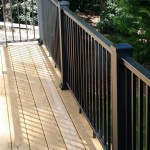Creating The Perfect Flagstone Patio Floor
A flagstone patio floor offers a visually appealing and remarkably durable outdoor living space. The natural variations in color, texture, and shape inherent in flagstone create a unique and inviting atmosphere. However, successfully building a flagstone patio requires careful planning, meticulous preparation, and a solid understanding of the materials and techniques involved. This article details the essential steps for creating a perfect flagstone patio floor, covering everything from site preparation to stone selection and installation.
The longevity and aesthetic appeal of a flagstone patio are directly tied to the quality of the underlying base. A poorly constructed base will inevitably lead to sinking, shifting, and cracking, regardless of the quality of the flagstone itself. Therefore, prioritizing a well-compacted and properly layered base is paramount to the success of the project. Similarly, choosing the right flagstone type impacts both the aesthetic and durability of the patio. Considerations include the stone's color, texture, thickness, and resistance to weathering in the specific climate.
Planning and Preparation: Setting the Stage for Success
Before laying the first stone, a thorough planning phase is crucial. This initial step involves several critical considerations, including site selection, determining the patio size and shape, and assessing drainage requirements. Selecting a suitable location is more than just choosing an aesthetically pleasing spot; it also involves evaluating the existing soil conditions and considering potential challenges like tree roots or buried utilities.
Once the site is chosen, the next step is to define the desired size and shape of the patio. This decision should be based on how the space will be used – for dining, lounging, or a combination of activities. The chosen shape should complement the surrounding landscape and architecture. Simple geometric shapes are often easier to work with, but more complex designs can add visual interest.
Assessing drainage is perhaps one of the most critical aspects of the planning phase. Standing water can wreak havoc on a flagstone patio, leading to erosion, algae growth, and eventual structural damage. The patio should be designed with a slight slope, typically about ¼ inch per foot, to allow water to drain away from the house and surrounding structures. If natural drainage is insufficient, consider installing a French drain or other drainage system to effectively manage runoff.
After finalizing the design, the site must be prepared for excavation. This involves removing all existing vegetation, topsoil, and any other debris. The depth of excavation will depend on the thickness of the flagstone and the depth of the base materials. As a general rule, excavate to a depth of at least 8-12 inches to accommodate a sufficient base layer.
Once the site is excavated, it is essential to compact the subsoil thoroughly. A plate compactor is the ideal tool for this task, ensuring a stable and level foundation for the base materials. Compacting the subsoil is a critical step that prevents settling and shifting of the patio over time.
Marking out the perimeter of the patio during the planning stage using stakes and string lines ensures accurate dimensions and allows for visualization of the final product. This step helps to avoid costly mistakes later in the construction process. Carefully consider the placement of any permanent features, such as built-in seating or planters, during this phase.
Building a Solid Base: The Foundation of a Lasting Patio
A well-constructed base is the cornerstone of a durable and stable flagstone patio. The base typically consists of several layers of compacted materials, each serving a specific purpose. The most common materials used for the base include gravel, crushed stone, and sand. The thickness of each layer will vary depending on the soil conditions and the intended use of the patio.
The first layer of the base is typically a layer of gravel, which provides drainage and prevents water from accumulating beneath the flagstone. This layer should be at least 4-6 inches thick and compacted thoroughly using a plate compactor. The gravel should be evenly distributed and leveled to create a uniform surface.
The second layer of the base typically consists of crushed stone, which provides additional stability and load-bearing capacity. This layer should be at least 2-4 inches thick and compacted in the same manner as the gravel layer. Crushed stone with sharp edges, often referred to as "crusher run," interlocks better and provides a more stable base than rounded gravel.
The final layer of the base is typically a layer of sand, which provides a smooth and level surface for setting the flagstone. This layer should be approximately 1 inch thick and carefully screeded to create a perfectly level surface. The sand should be dampened slightly to aid in compaction and prevent it from shifting during the installation process.
Proper compaction of each layer of the base is crucial. A plate compactor should be used to compact each layer in multiple passes, ensuring that the materials are tightly packed and stable. Neglecting to properly compact the base is a common mistake that can lead to settling, shifting, and cracking of the flagstone patio over time.
When building the base, it is essential to maintain the desired slope for drainage. Use a level and a straight edge to ensure that the base is sloping away from the house at a consistent rate. This will prevent water from pooling on the patio and causing damage.
Selecting and Installing Flagstone: The Art of Placement
Choosing the right flagstone is a crucial step in creating a beautiful and durable patio. Flagstone is available in a wide variety of colors, textures, and thicknesses, so it is important to select a stone that complements the surrounding landscape and meets the specific requirements of the project. Consider the stone's resistance to weathering, its slip resistance, and its overall aesthetic appeal.
Before beginning the installation process, it is helpful to lay out the stones on the prepared base to get a sense of the overall pattern and arrangement. This allows for experimentation and adjustments before the stones are permanently set in place. Aim for a balanced and visually appealing pattern, avoiding long, continuous joints that can weaken the patio. Varying the size and shape of the stones can create a more natural and interesting look.
When setting the flagstone, begin by placing the largest stones first, working outwards from a central point or along a straight edge. Use a rubber mallet to gently tap the stones into place, ensuring that they are level with the surrounding stones. The sand base should provide enough cushioning to allow for minor adjustments in height.
The spaces between the flagstones, known as joints, are typically filled with polymeric sand, mortar, or gravel. The choice of jointing material will depend on the desired aesthetic and the intended use of the patio. Polymeric sand is a popular choice for its ease of installation and its ability to prevent weed growth. Mortar provides a more permanent and traditional look, but it requires more skill to install.
When using polymeric sand, sweep it into the joints and compact it using a broom or brush. Then, lightly mist the patio with water to activate the polymers, which will bind the sand together and create a firm, durable joint. Follow the manufacturer's instructions carefully to ensure proper installation.
When using mortar, mix it according to the manufacturer's instructions and apply it to the joints using a trowel. Be careful not to get mortar on the surface of the flagstone, as it can be difficult to remove. Use a damp sponge to clean up any excess mortar and smooth the joints.
Cutting flagstone is often necessary to achieve a precise fit and create a cohesive pattern. A wet saw with a diamond blade is the preferred tool for cutting flagstone, as it provides clean, accurate cuts and minimizes dust. When cutting flagstone, always wear safety glasses and gloves to protect yourself from injury.
Maintaining even spacing between the flagstones is crucial for a visually appealing and structurally sound patio. Use spacers to ensure consistent joint widths throughout the patio. The width of the joints will depend on the size and shape of the flagstones, but a typical joint width is between ½ inch and 1 inch.
After the flagstone is installed and the joints are filled, allow the patio to cure for several days before using it. This will allow the mortar or polymeric sand to fully harden and set, ensuring a durable and long-lasting patio. Regular maintenance, such as sweeping and occasional cleaning, will help to keep the flagstone patio looking its best for years to come.

How To Build A Flagstone Patio In One Day Merrypad

How To Build A Flagstone Patio In One Day Merrypad
:strip_icc()/101427270-f2fbe431e7174e86945a62e011e4d361.jpg?strip=all)
How To Install A Flagstone Patio Our Step By Guide

Choosing The Best Patio Material For Your Home Circle D Construction

How To Lay Flagstone Installation Guide Landscaping Network

Backyard Quartzite Flagstone Patio 14 Steps With Pictures Instructables

How To Install A Flagstone Patio Handyman Startup

How To Install A Flagstone Patio Step By

How To Build A Stone And Brick Patio Diy The Family Handyman

How Much Do Flagstone Patios Cost In 2024 Forbes Home
Related Posts








